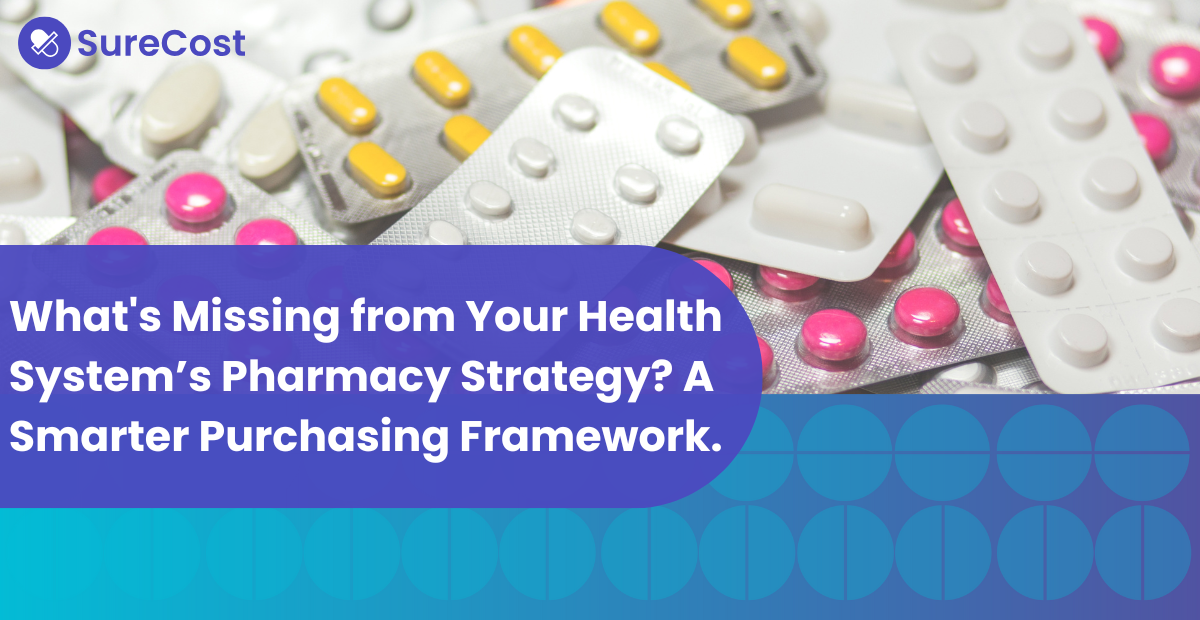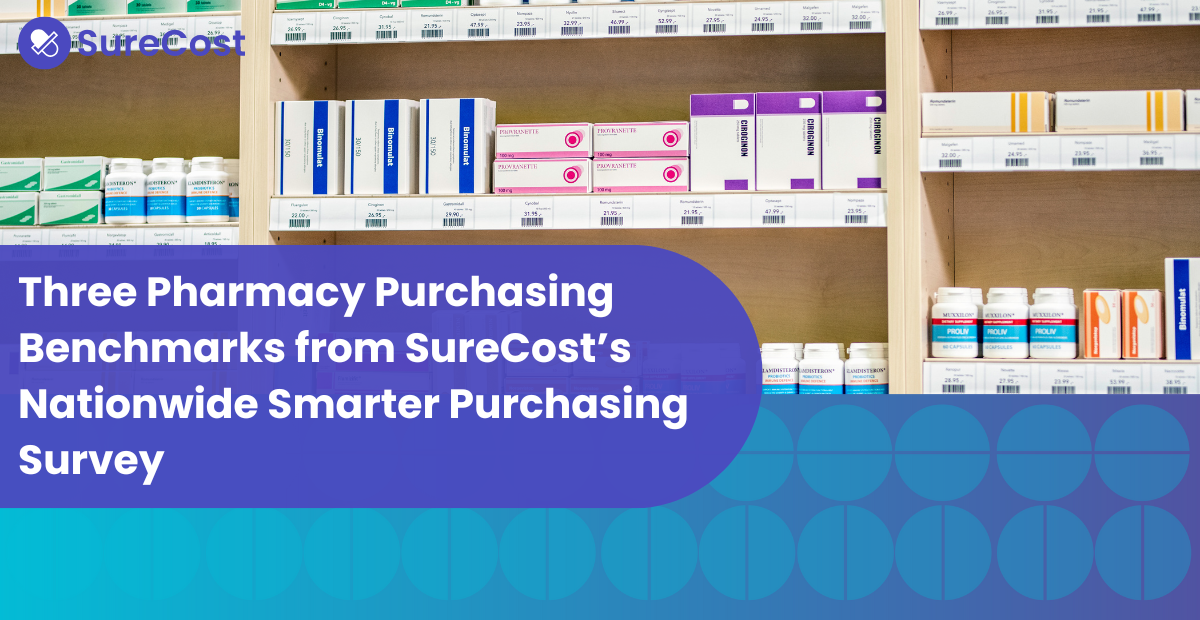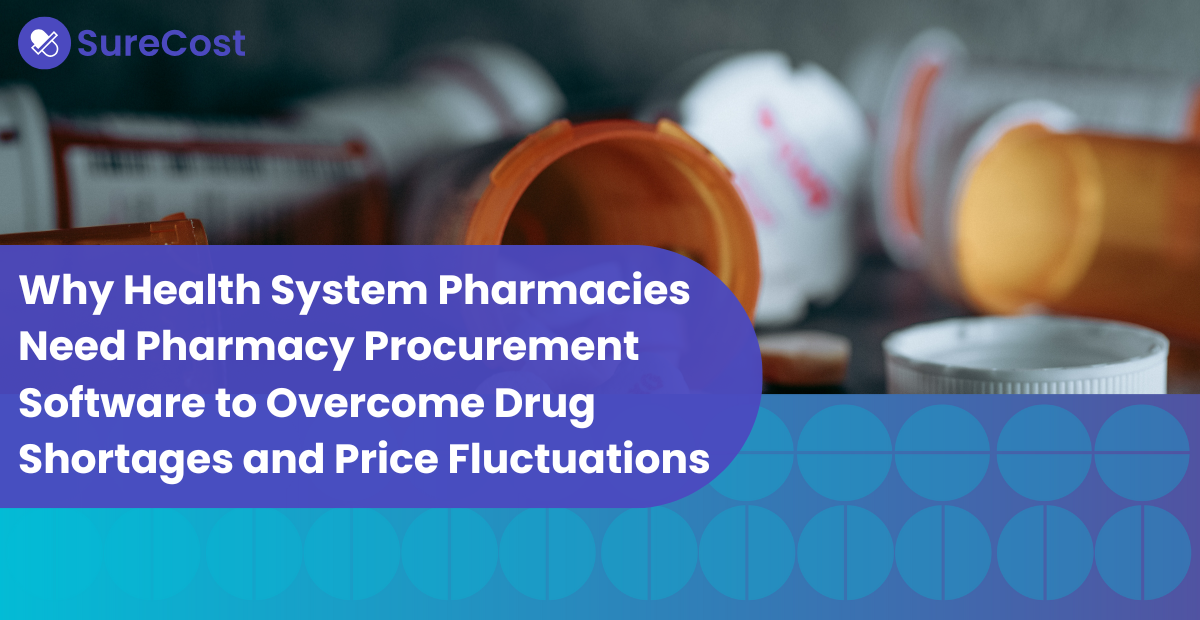Amid margin pressure, staffing burnout and rising technology costs, health system leaders are urgently searching for ways to protect their financial stability. One strategic lever remains largely underutilized: pharmacy purchasing. In this post, we’ll explore how smarter purchasing can directly support cost containment, reduce administrative burden aand improve staff retention—without disrupting clinical workflows.
A recent Becker’s Hospital Review poll asked C-suite executives from hospitals and health systems nationwide to rank the “top headwinds” they’re preparing for.
Their answers coalesced around five core issues:
- Managing costs amidst tight operating margins
- Staffing, especially retention and lowering burnout
- Technology (such as AI and cybersecurity)
- Sustaining growth amidst rising demand
- Regulatory and policy-related challenges
Notably absent from these discussions? Pharmacy purchasing and procurement.
While two speakers mentioned “pharmaceuticals” in passing, no one discussed the impact of pharmacy purchasing on a health system’s financial performance. That’s not a misstep—it’s an opportunity.
Why Health Systems Need to Focus on Pharmacy Purchasing
The least surprising part of the article is how often fiscal viability came up. One CEO summarized the situation well: “Our cost of doing business has escalated dramatically, from supply costs to the cost of employment...Costs are greatly exceeding our revenues.” A CFO described “significant challenges related to cost containment and revenue cycle management.”
Yet most health systems still treat pharmacy procurement as a back-office function, rather than a controllable cost driver. Smarter purchasing can reduce drug spend, improve compliance with GPO and private contracts and capture more rebates—directly impacting margin.
Drug prices in the United States are some of the highest in the world (and they’re going to get even higher under the IRA and due to the impact of recently enacted tariffs). Multiple interviewees in the Becker's article indicate that patient volume at hospitals and health systems are growing. That means pharmaceutical costs are also going to increase. If health systems want to stabilize margins, they need to lower their cost-of-goods-sold (COGS) for prescription drugs.
Pharmacy Staffing Strain Is a Financial Risk
Staffing was another frequently cited challenge. One HR executive said, “Retaining skilled healthcare professionals is becoming increasingly challenging. Factors such as burnout, especially exacerbated by the COVID-19 pandemic, contribute to high turnover rates.” That’s alongside increased patient volume and complexity of care noted throughout these interviews.
While most executives immediately think of nurses and physicians, pharmacy professionals are facing their own staffing crisis. A recent survey from the American Society of Health-System Pharmacists reported turnover rates of at least 21% in 2021, with nearly 10% reporting they lost at least 41% of their technicians. A University of Washington study outlined some troubling statistics when it comes to the incoming talent pool:
- 35% reduction in applications to pharmacy schools and colleges over the last decade
- 60% decrease in average enrollment between 2008 and 2017
- 83% of pharmacy schools couldn’t fill all seats in their 2019 entering cohort
- 37% of pharmacy professionals reported an employment change in 2022
Hospital and health systems are focused on staff retention, and that should include their pharmacy. Training new pharmacy staff costs time and money. So does paying overtime to staff covering open positions. Turnover of pharmacy technicians cost one Providence-based hospital up to $35,000 per occurrence. Pharmacist turnover can cost up to six times more. Those costs are avoidable.
Training, recruiting and retaining pharmacy staff costs time and money. Reducing manual purchasing tasks, streamlining workflows and optimizing inventory operations helps teams focus on clinical work and improve job satisfaction—directly supporting retention goals.
How Smarter Pharmacy Purchasing Supports Health Systems
Pharmacy purchasing isn’t just about securing product—it’s about operational efficiency, margin protection and workforce enablement. By investing in smarter tools, health systems can reduce drug spend, minimize manual effort and empower teams to work at the top of their license.
A unified purchasing solution can instantly analyze all pharmacy purchasing options to find the best one, factoring in price, availability, and compliance–whether for WAC, GPO or 340B, purchases. A system like SureCost empowers health system pharmacies to shop an expanded vendor catalog and secure competitive pricing across their portfolio.
This approach lowers COGS by millions of dollars. Expanding their vendor portfolio saved SureCost customers over $131M and reduced their COGS by approximately 11% on average annually. For leaders seeking margin recovery, this is a proven path forward.
In addition to saving the health system money, streamlining pharmacy teams’ work incentivizes staff to remain with the organization. An integrated purchasing solution consolidates all purchasing data into a single interface. Staff can use one platform to compare and purchase (instead of juggling multiple catalogs, web interfaces, product listings, etc.). SureCost clients report that their purchasers can reduce the amount of time they spend on purchasing-related activities by up to 50%.
Unlike siloed wholesaler platforms or standalone 340B systems, SureCost centralizes all purchasing—WAC, GPO and 340B—into one interface. This allows staff to compare, decide and order in real time, without toggling between systems or waiting for data.
Smarter Pharmacy Procurement Meets Multiple Executive Priorities
Several health systems executives also mentioned investing in technology and artificial intelligence (AI). SureCost’s intelligent purchasing automation applies those principles directly to pharmacy operations. By eliminating redundant steps and surfacing optimal decisions instantly, staff can spend more time on clinical care and less time on procurement admin.
This drives meaningful retention benefits, as pharmacy professionals feel more engaged and less burdened by non-clinical work. It’s also an immediate path to margin improvement, especially in a time when labor and supply chain costs continue to rise.
An Opportunity to Meet Several Critical Needs With One Product
By driving multi-million-dollar savings and supporting staff retention, smarter pharmacy procurement can help transform pharmacy operations and organizational impact. Given their priorities around financial health, staffing and technology, health system leaders should invest in an integrated pharmacy purchasing solution and deploy smarter pharmacy purchasing strategies.
Health systems that recognize pharmacy procurement as a strategic opportunity will gain a competitive advantage over those who don’t.
Ready to explore how smarter pharmacy purchasing can strengthen your bottom line and your team? Let’s talk.







